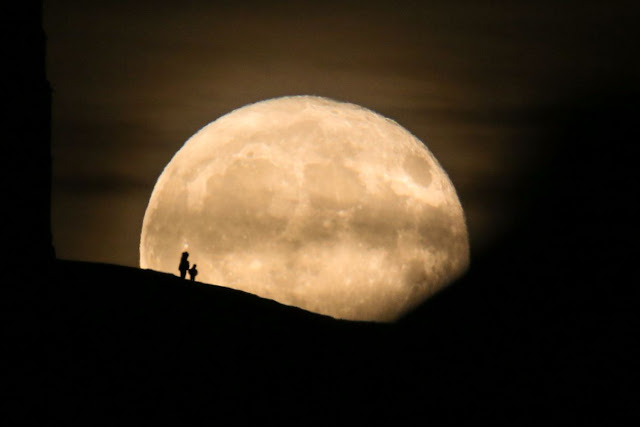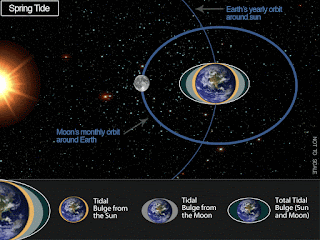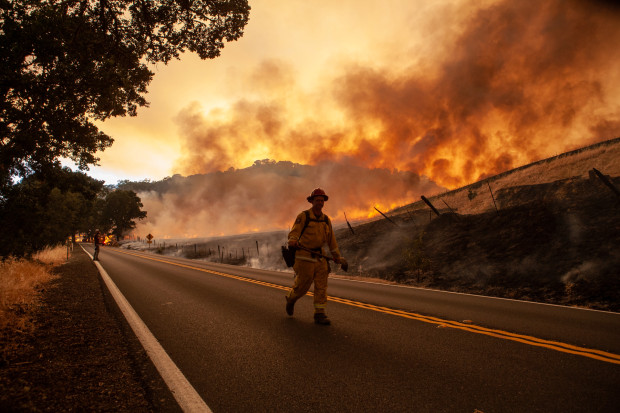Ever Wondered Life Without Moon?
For
almost the whole 4.5 billion year history of our Solar System, the Earth hasn't been distant from
everyone else while we rotate around the Sun. Our monster lunar partner is
bigger and more gigantic than whatever other moon when contrasted with the
planet it circles. At the point when it's in its full stage, it brilliantly
lights up the night, and the Moon has been connected all through history to
marvels, for example, madness (or lunacy), creature conduct (yelling at the
moon), cultivating (a reap moon), and even ladies' menstrual cycles. While
those connections don't face logical examination, there are numerous ways the
Moon really affects the Earth. Pulverizing it would be a disaster, however
would likewise change our reality perpetually in some unfathomably intriguing
ways.
1. Our tides would
be modest: Once
the Moon and every one of its leftovers were gone, the second-brightest protest
from Earth's sky
would be totally gone. While the Sun is normally 400,000 times brighter than
even the full, perigee Moon, the full Moon is again 14,000 times brighter than
the following brightest question in the sky: Venus.
2.The length of a
day would remain constant: Regardless of whether you're talking
sunlight based eclipses — partial,
add up to or annular — or lunar shrouds, where Earth's characteristic satellite
goes into our shadow, we would never again have obscuration’s of any sort.
Shrouds require three items to be adjusted: the Sun, a planet and a planet's
moon. At the point when the moon goes between the Sun and a planet, a
shadow can be thrown on the planet's surface (add up to overshadow), the moon
can travel over the Sun's surface (annular obscuration), or it can cloud only a
small amount of the Sun's light (halfway shroud). In any case, without a moon
by any means, none of these could happen. Our exclusive common satellite could
never go into Earth's shadow on the off chance that it didn't exist, putting a
conclusion to shrouds
3. Eclipses would
be no more: High
tide and low tide shows a fascinating, huge contrast for those of us who live
close to the drift, especially in case we're in a cove, sound, channel, or
other region where water pools. Our tides on Earth are basically because of the
Moon, with the Sun contributing just a little portion of the tides we see
today. Amid full moons and new moons, when the Sun, Earth and Moon are
adjusted, we have spring tides: the biggest contrasts amongst high and low tide
conceivable.
1 4.The night sky
would be naturally much brighter: This is a terrible one. Earth
turns on its pivot; tilted at 23.4° as for our orbital plane around the Sun.
(This is known as our obliquity.) You won't think the Moon has much to do with
that, however more than a huge number of years that tilt changes: from as
meager as 22.1° to as much as 24.5°. The Moon is a settling power, as universes
without huge moons — like Mars — sees their hub tilt change by tenfold the
amount of after some time.
1 5.We would never
again have our venturing stone to whatever is left of the Universe: To the
extent we can tell, humankind is simply the main species to obstinately put
ourselves on the surface of a different universe. Some portion of why we could
do that, from 1969 to 1972, is a direct result of how shut the Moon is to
Earth. At just 380,000 km away, a regular rocket can make the excursion in
around 3 days, and a round-trip motion at the speed of light takes just 2.5
seconds. The following nearest options — Mars or Venus — take months to arrive
by means of rocket, over a year for a round excursion, and numerous minutes for
a round-trip correspondence.
6.Full Moon Glows
in a Blood-Red Puddle in 'Martian' Landscape: A full
moon is reflected in a puddle of acid water at Achada do Gamo, part of the Dark
Sky Alqueva reserve in Mértola, Portugal. Acidic water is unforgiving, however
we realize that organisms on Earth can flourish in it. On Earth, microbial
groups flourish in exceedingly acidic waters rich in iron and sulfur, for
example, the crimson waters of the Río Tinto, a waterway in south-western
Spain. Among the minerals broke down in the waters of the Río Tinto is
jarosite, a similar mineral that gave scientists a tempting piece of
information about Mars' watery past. Regardless of whether life at any point
existed on Mars still can't seem to be resolved.










Comments
Post a Comment